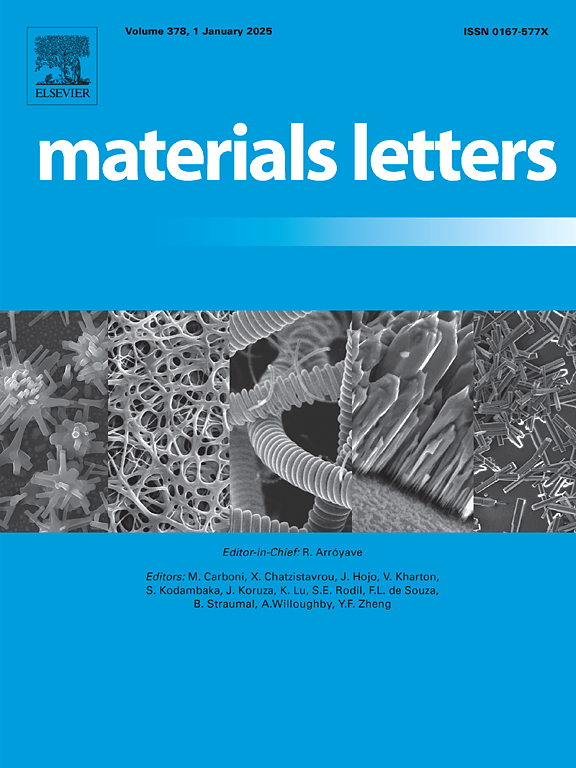SrFe1−xZrxO3−δ的缺陷化学性质
IF 2.7
4区 材料科学
Q3 MATERIALS SCIENCE, MULTIDISCIPLINARY
引用次数: 0
摘要
用库仑滴定法测定了SrFe1−xZrxO3−δ (x = 0.05, 0.10, 0.15)的氧含量,并用缺陷化学模型成功地进行了模拟。在b亚晶格中引入锆后,氧离子无法进入部分阴离子位置。锆稳定了制备的SrFe1−xZrxO3−δ氧化物的立方结构,但没有增加其中的氧含量,表明氧亚晶格具有局部有序性。铁素体b -亚晶格中添加10%的锆可以防止铁素体向褐磨矿转变,而添加5%的锆则不足以阻止铁素体向褐磨矿转变。褐铁矿相SrFe0.95Zr0.05O3−δ和立方钙钛矿相SrFe0.9Zr0.1O3−δ分别比Sr2Fe2O5和SrFeO3−δ更耐还原性分解。本文章由计算机程序翻译,如有差异,请以英文原文为准。
Defect chemistry of SrFe1−xZrxO3−δ
The data on oxygen content in SrFe1−xZrxO3−δ (x = 0.05, 0.10, 0.15) were obtained by coulometric titration and successfully simulated by a defect chemistry model. Zirconium introduction into the B-sublattice was found to make a portion of anion sites inaccessible for oxygen ions. Zirconium stabilizes the cubic structure of as-prepared SrFe1−xZrxO3−δ oxides but does not increase the oxygen content in them, suggesting local ordering of the oxygen sublattice. 10 % zirconium in the B-sublattice of ferrite was found to prevent its phase transition to brownmillerite, whereas 5 % was insufficient for this. The brownmillerite phase SrFe0.95Zr0.05O3−δ and the cubic perovskite phase SrFe0.9Zr0.1O3−δ were shown to be more resistant to reductive decomposition than Sr2Fe2O5 and SrFeO3−δ, respectively.
求助全文
通过发布文献求助,成功后即可免费获取论文全文。
去求助
来源期刊

Materials Letters
工程技术-材料科学:综合
CiteScore
5.60
自引率
3.30%
发文量
1948
审稿时长
50 days
期刊介绍:
Materials Letters has an open access mirror journal Materials Letters: X, sharing the same aims and scope, editorial team, submission system and rigorous peer review.
Materials Letters is dedicated to publishing novel, cutting edge reports of broad interest to the materials community. The journal provides a forum for materials scientists and engineers, physicists, and chemists to rapidly communicate on the most important topics in the field of materials.
Contributions include, but are not limited to, a variety of topics such as:
• Materials - Metals and alloys, amorphous solids, ceramics, composites, polymers, semiconductors
• Applications - Structural, opto-electronic, magnetic, medical, MEMS, sensors, smart
• Characterization - Analytical, microscopy, scanning probes, nanoscopic, optical, electrical, magnetic, acoustic, spectroscopic, diffraction
• Novel Materials - Micro and nanostructures (nanowires, nanotubes, nanoparticles), nanocomposites, thin films, superlattices, quantum dots.
• Processing - Crystal growth, thin film processing, sol-gel processing, mechanical processing, assembly, nanocrystalline processing.
• Properties - Mechanical, magnetic, optical, electrical, ferroelectric, thermal, interfacial, transport, thermodynamic
• Synthesis - Quenching, solid state, solidification, solution synthesis, vapor deposition, high pressure, explosive
 求助内容:
求助内容: 应助结果提醒方式:
应助结果提醒方式:


